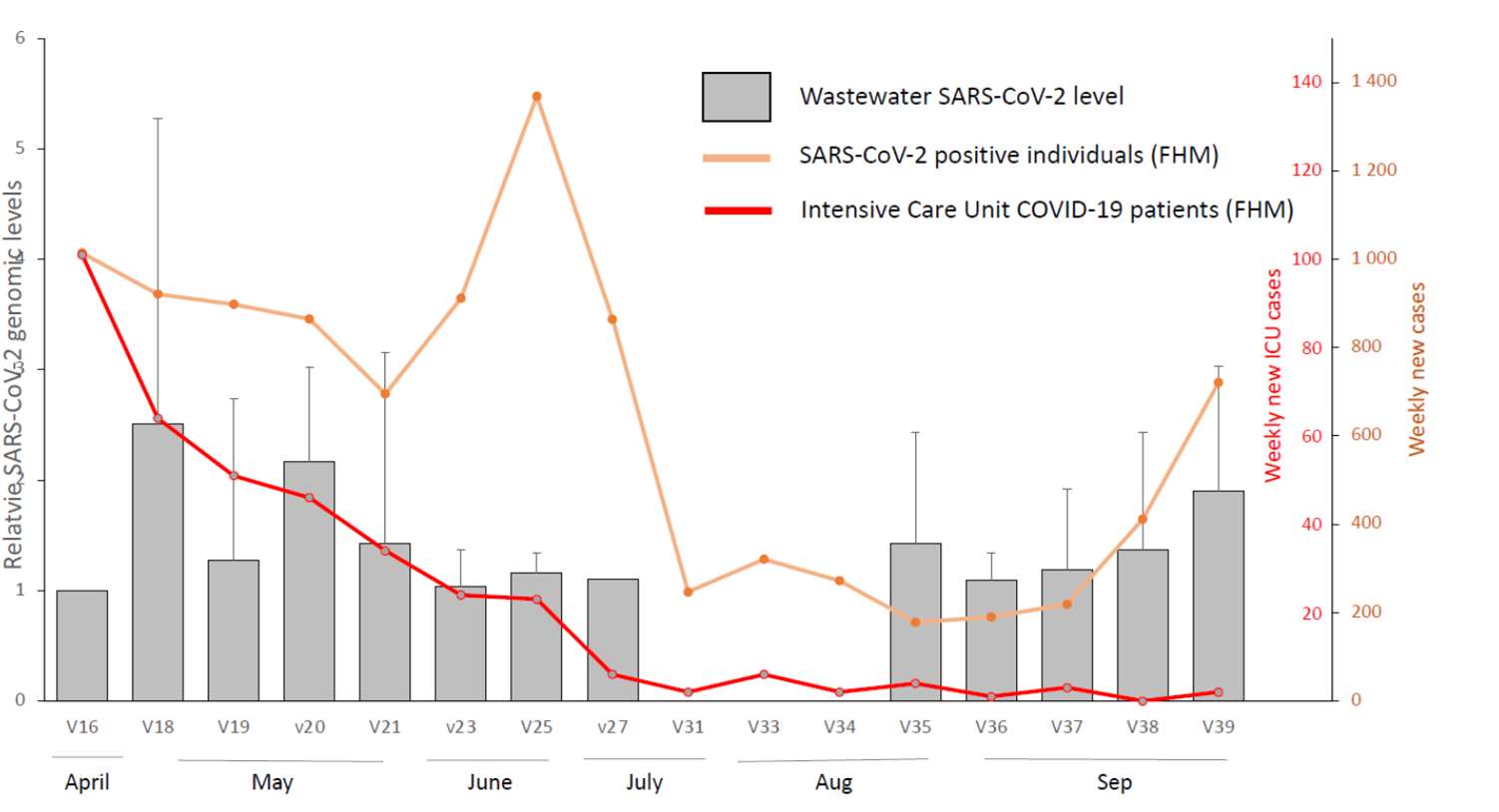5 Oct. - Summary of preliminary results from wastewater analysis for tracing SARS-CoV-2
Stockholm region, October 5, 2020
Background and method
Sampling of wastewater has been done since mid-April at Bromma,
Henriksdal, and Käppala wastewater treatment plants (WWTP). These
treatment plants receive wastewater from a population of approximately
290,000; 790,000 and 500,000, respectively.
The sampling at Henriksdal and Bromma started in week no. 16 (13 April)
and the Käppala sampling started in week no. 18, following a sampling
protocol developed by KTH. The flow-proportional pooled samples were
taken bi-weekly until end of July. From week no.35 the sampling was
done every week. After concentration, filtering and preparation, the
samples have been analysed using qPCR technique for genetic material
(RNA) belonging to the virus SARS-CoV-2, known to cause the COVID-19
pandemic.
During June and July, KTH researchers have compared four different
concentration methods, two of them are commonly used internationally
and the other two methods were adapted by the KTH team. The sensitivity
of two ultrafiltration-based methods and two adsorption and extractionbased
methods were compared for the SARS-CoV-2 as well as for two
reference viruses. Our investigation concluded that the double ultrafiltration
method adapted by KTH has a significantly higher efficiency
compared to single filtration and adsorption methods. These findings will
be published in an internationally leading scientific journal shortly.
Preliminary Results
Currently we can report only on the relative changes in genomic level of
the wastewater. The RNA signal from the wastewater analysis reflects the
amount of virus excreted from infected persons within the catchment
area, and may thus be used as an indicator when assessing the trend of
the COVID-19 pandemic among the population.
The relative genomic level in the catchment area is calculated as a mean
value for the three sampling sites, and are presented in figure 1.

The highest genomic level in the wastewater was detected
between end of April and middle of May. From July 6th to August
24 we were not been able to detect the RNA from SARS-CoV-2 in any of
the samples. From August 24 (week 35) and to 27 September
(week 39) the relative genomic level has increased steadily. In
the most recent analysis period (week 39) the relative genomic
level has reached a level similar to that detected in May.
According to data from Folkhälsomyndigheten (FHM, Swedish Public
Health Agency) the number of confirmed new COVID-19 cases in
Stockholm region reached a peak in mid-June (week no. 25) while the
highest number of intensive care unit cases was recorded in April. The
total numbers of confirmed cases depend on individual testing, the
frequency of which has varied significantly during the pandemic.
According to FHM data, the number of confirmed cases has increased
during the last weeks of September within the studied area of Stockholm
(pop. 1.7 million). This is supported by our findings, which clearly show
an increase of RNA from the new Coronavirus in the wastewater.
The results are still associated with uncertainties since we are yet to
normalise the calculations against variation in flowrate and population.
Nevertheless, we are confident about the observed trend of increasing
genomic levels of the SARS-CoV-2 in the wastewater of Stockholm.
The ambition of KTH and partners is to continue the sampling and
analysis throughout 2020 after which a new decision will be made,
depending on resources available and demand from relevant public health
authorities. We also welcome the continued collaboration with SciLifeLab, Uppsala University and SLU, and international partners, in developing knowledge and methods for waste-water based epidemiology.
Zeynep Cetecioglu Gurol, Associate Professor
Cecilia Williams, Professor
David Nilsson, Associate Professor
KTH Royal Institute of Technology
Graph over SARS-CoV-2 in Stockholm wastewater, week 16-39, 2020 (pdf 59 kB)